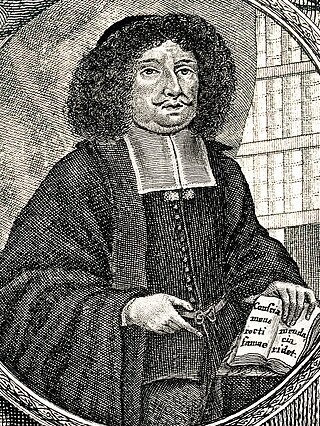
The phlogiston theory is a superseded scientific theory that postulated the existence of a fire-like element called phlogiston contained within combustible bodies and released during combustion. The name comes from the Ancient Greek φλογιστόνphlogistón, from φλόξphlóx (flame). The idea was first proposed in 1667 by Johann Joachim Becher and later put together more formally by Georg Ernst Stahl. Phlogiston theory attempted to explain chemical processes such as combustion and rusting, now collectively known as oxidation. It was challenged by the concomitant weight increase and was abandoned before the end of the 18th century following experiments by Antoine Lavoisier and others. Phlogiston theory led to experiments that ultimately concluded with the discovery of oxygen.

Joseph Priestley was an English chemist, natural philosopher, separatist theologian, grammarian, multi-subject educator, and liberal political theorist. He published over 150 works, and conducted experiments in electricity and other areas of science. He was a close friend of, and worked in close association with Benjamin Franklin involving electricity experiments.
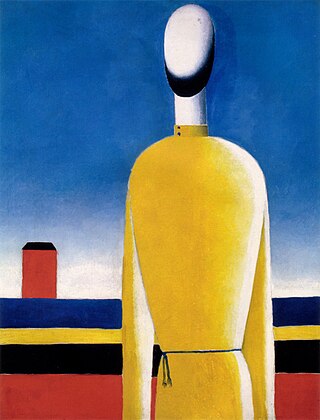
Precognition is the purported psychic phenomenon of seeing, or otherwise becoming directly aware of, events in the future.
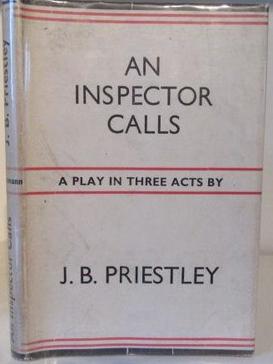
An Inspector Calls is a modern morality play written by English dramatist J. B. Priestley, first performed in the Soviet Union in 1945 and at the New Theatre in London the following year. It is one of Priestley's best-known works for the stage and is considered to be one of the classics of mid-20th century English theatre. The play's success and reputation were boosted by a successful revival by English director Stephen Daldry for the National Theatre in 1992 and a tour of the UK in 2011–2012.

John Boynton Priestley was an English novelist, playwright, screenwriter, broadcaster and social commentator.

Hans Jürgen Eysenck was a German-born British psychologist who spent his professional career in Great Britain. He is best remembered for his work on intelligence and personality, although he worked on other issues in psychology. At the time of his death, Eysenck was the most frequently cited living psychologist in the peer-reviewed scientific journal literature.

John William Dunne was a British soldier, aeronautical engineer and philosopher. As a young man he fought in the Second Boer War, before becoming a pioneering aeroplane designer in the early years of the 20th century. Dunne worked on automatically stable aircraft, many of which were of tailless swept wing design, to achieve the first aircraft demonstrated to be stable. He later developed a new approach to dry fly fishing before turning to speculative philosophy, where he achieved some prominence and literary influence through his "serialism" theory on the nature of time and consciousness, first set out in his book An Experiment with Time.
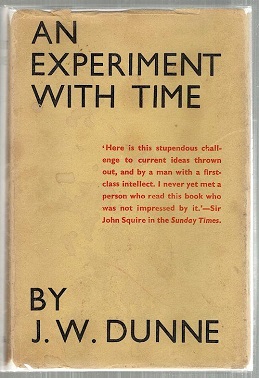
An Experiment with Time is a book by the British soldier, aeronautical engineer and philosopher J. W. Dunne (1875–1949) about his precognitive dreams and a theory of time which he later called "Serialism". First published in March 1927, the book was widely read. Although never accepted by mainstream scientists or philosophers, it has influenced imaginative literature ever since. Dunne published four sequels: The Serial Universe, The New Immortality, Nothing Dies and Intrusions?

Four-dimensional space (4D) is the mathematical extension of the concept of three-dimensional space (3D). Three-dimensional space is the simplest possible abstraction of the observation that one needs only three numbers, called dimensions, to describe the sizes or locations of objects in the everyday world. For example, the volume of a rectangular box is found by measuring and multiplying its length, width, and height. This concept of ordinary space is called Euclidean space because it corresponds to Euclid's geometry, which was originally abstracted from the spatial experiences of everyday life.
Cecil John Charles Street, who was known to his colleagues, family and friends as John Street, began his military career as an artillery officer in the British Army. During the course of World War I, he became a propagandist for MI7, in which role he held the rank of Major. After the armistice, he alternated between Dublin and London during the Irish War of Independence as Information Officer for Dublin Castle, working closely with Lionel Curtis. He later earned his living as a prolific writer of detective novels.
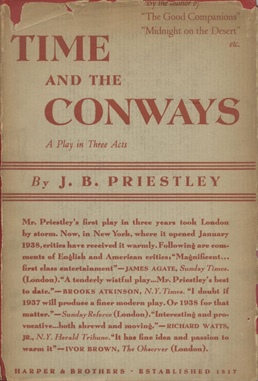
Time and the Conways is a British play written by J. B. Priestley in 1937 illustrating J. W. Dunne's Theory of Time through the experience of a moneyed Yorkshire family, the Conways, over a period of nineteen years from 1919 to 1937. Widely regarded as one of the best of Priestley's Time Plays, a series of pieces for theatre which played with different concepts of Time, it continues to be revived in the UK regularly.

The Gap in the Curtain is a 1932 borderline science fiction novel by the Scottish author John Buchan. Part of the action is autobiographical, featuring the agonies of a contemporary up-and-coming politician. It explores the theory of serial time put forward by J W Dunne: Buchan had been reading An Experiment with Time.

The History and Present State of Electricity (1767), by eighteenth-century British polymath Joseph Priestley, is a survey of the study of electricity up until 1766, as well as a description of experiments by Priestley himself.
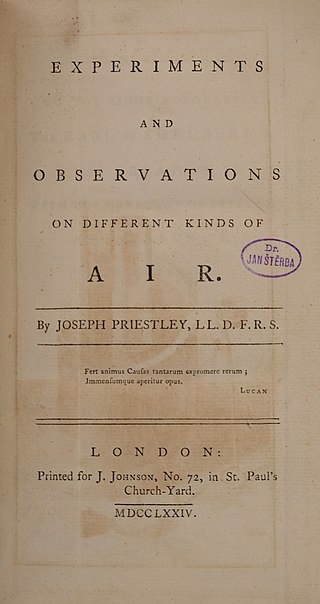
Experiments and Observations on Different Kinds of Air (1774–86) is a six-volume work published by 18th-century British polymath Joseph Priestley which reports a series of his experiments on "airs" or gases, most notably his discovery of the oxygen gas.
The possibility that there might be more than one dimension of time has occasionally been discussed in physics and philosophy. Similar ideas appear in folklore and fantasy literature.
Johnson Over Jordan is a play by J.B. Priestley.

An Island in the Moon is the name generally assigned to an untitled, unfinished prose satire by William Blake, written in late 1784. Containing early versions of three poems later included in Songs of Innocence (1789) and satirising the "contrived and empty productions of the contemporary culture", An Island demonstrates Blake's increasing dissatisfaction with convention and his developing interest in prophetic modes of expression. Referred to by William Butler Yeats and E. J. Ellis as "Blake's first true symbolic book," it also includes a partial description of Blake's soon-to-be-realised method of illuminated printing. The piece was unpublished during Blake's lifetime, and survives only in a single manuscript copy, residing in the Fitzwilliam Museum, in the University of Cambridge.

The Inspector is a 1962 CinemaScope DeLuxe Color British-American drama film directed by Philip Dunne, starring Stephen Boyd and Dolores Hart. Hart plays Lisa Held, a Dutch-Jewish girl who has survived the horror of Auschwitz concentration camp.
I Have Been Here Before is a play by J. B. Priestley, first produced by Lewis Casson at the Royalty Theatre, London, on 22 September 1937.
The philologist and author J. R. R. Tolkien set out to explore time travel and distortions in the passage of time in his fiction in a variety of ways. The passage of time in The Lord of the Rings is uneven, seeming to run at differing speeds in the realms of Men and of Elves. In this, Tolkien was following medieval tradition in which time proceeds differently in Elfland. The whole work, too, following the theory he spelt out in his essay "On Fairy-Stories", is meant to transport the reader into another time. He built a process of decline and fall in Middle-earth into the story, echoing the sense of impending destruction of Norse mythology. The Elves attempt to delay this decline as far as possible in their realms of Rivendell and Lothlórien, using their Rings of Power to slow the passage of time. Elvish time, in The Lord of the Rings as in the medieval Thomas the Rhymer and the Danish Elvehøj, presents apparent contradictions. Both the story itself and scholarly interpretations offer varying attempts to resolve these; time may be flowing faster or more slowly, or perceptions may differ.














